25 September 2025
I can’t believe that Godzilla was the last of his species. If nuclear testing continues, then someday, somewhere in the world, another Godzilla may appear.
Godzilla, King of the Monsters
Unfortunately, Dr. Yamane’s quote from the 1954 epic Godzilla concerns me less about the return of giant atomic monsters than about the current political world of the USA. With my morning coffee and Tokyo Tower view, I plan my day.
Tokyo has long been the stomping ground of Godzilla and frenemies, infamous King of Monsters and God of Destruction. Today, I tread gardens, palaces, temples and maybe pay a bit of homage to the big guy himself. Godzilla, not the orange ape in Washington DC.
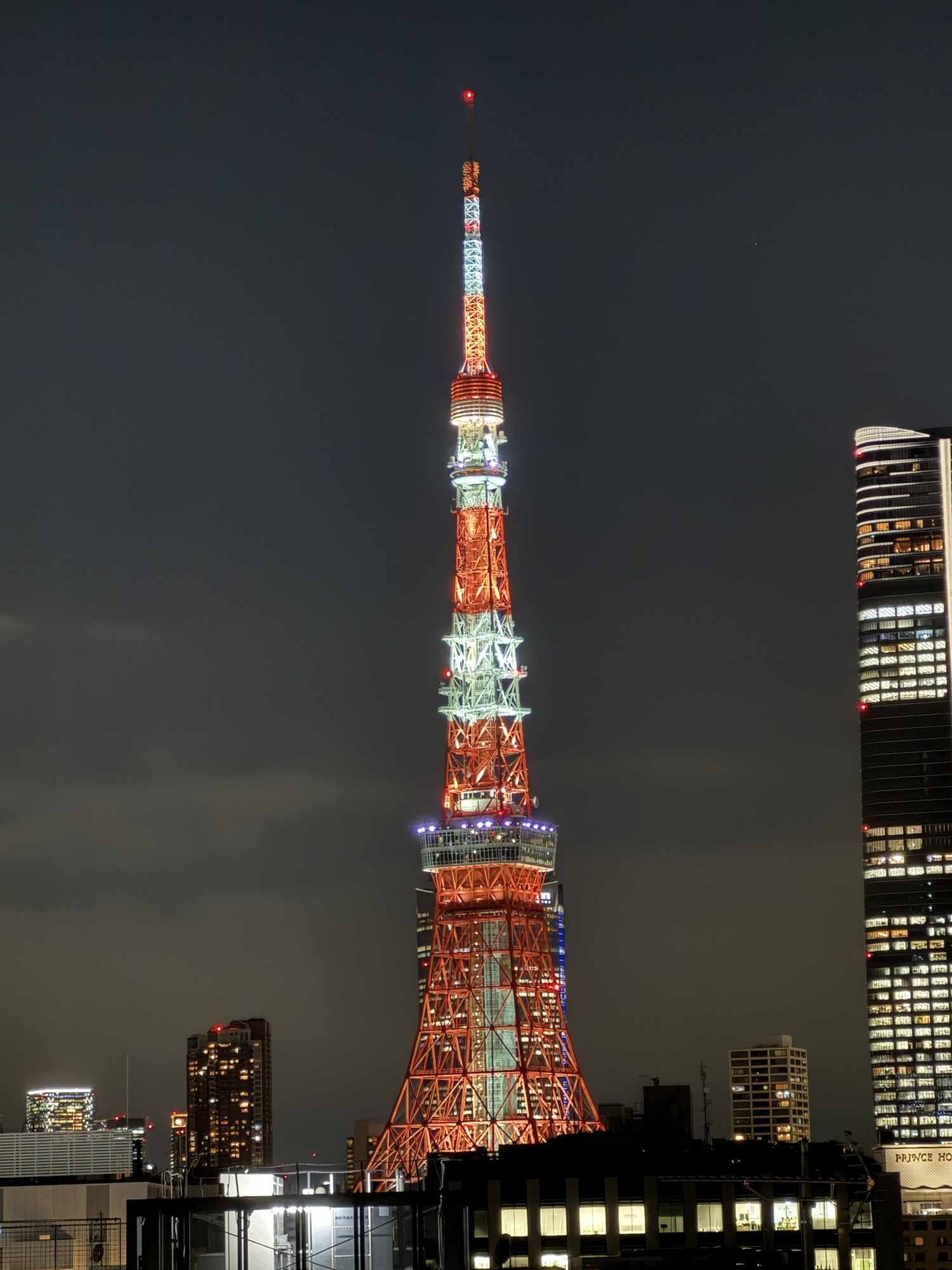
Nighttime provides an even better imaginary scenario for the assault on the Tokyo Tower by Godzilla and pals.
These feet are made for walkin’
Imagine stepping into a Tokyo metro station at rush hour or for that fact, any hour. It’s like joining a choreographed dance where everyone knows the steps awhile I trip over my own feet. Trains arrive with clockwork precision, but the real drama is watching entire rivers of humanity squeeze into cars already packed tighter than a sushi roll.

The main train stations, like Hamamatsuchō, are massive with multi levels, tunnels and exits. Around 3.6 million passengers per day pass through Shinjuku Station. Truly, poor Charlie on the MTA would have nothing to complain about here. There exists lots of signage and maps. Learning to use and understand them takes some time. Finding the right exit could take ten times longer than the train ride itself.
Station attendants may give a gentle push to make humans fit. No cattle prods seen! It’s efficient, impressive, and slightly terrifying. I have never desired the experience of being sardined with strangers. I determine to earn my steps by walking—at least then I’ll have elbow room and a chance to actually see the city.
Hibiya Park
My first stop is Hibiya Park, Japan’s first Western-style garden. It feels like a little green pause button in the middle of Tokyo’s nonstop drone of pedestrians and traffic. Opened in 1903, Western landscaping blends with Japanese touches—broad lawns, flower beds, tranquil ponds, Crane Fountain, and old stone structures.

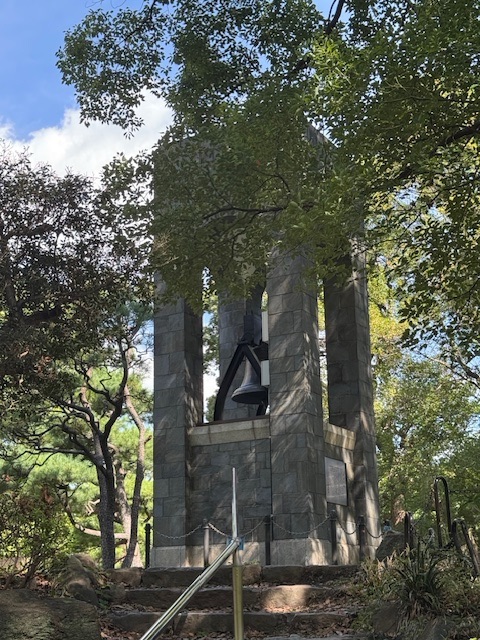
Pond and Crain Fountain. Liberty Bell
I experience a leisurely stroll along paths shaded by old ginkgo trees and stop to watch koi ripple the water. A stunning contrast of skyscrapers rise just beyond the park’s edges.
The Big Guy of Tokyo
Nearby Hibiya Gate, I find one of Tokyo’s quirkiest tributes—Godzilla Square. Towering over the plaza stands a big bronze statue of the King of the Monsters himself, mid-roar and looking ready to stomp Tokyo flat. The square celebrates Godzilla as both cinematic menace and unlikely cultural ambassador. After all, not every city adopts its destroyer as a mascot! (New York needs to get with the King Kong-program).
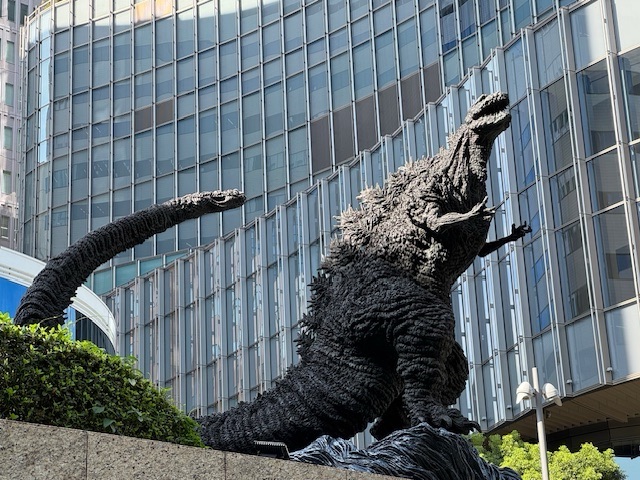
Standing beneath Godzilla, I appreciate the irony—this is the lizard who’s smashed Tokyo Tower more times than I can count. Yet, he’s posed lean and mean in a business district. It’s equal parts intimidating and endearing.
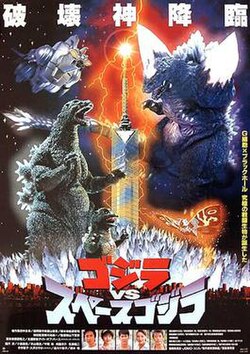
According to a plaque, the statue houses the final shooting script and storyboard from the 1954 movie. Raymond Burr ashes not included. While Burr remained proud of his part in the movie, he was buried in Canada.
From Godzilla to God
A short walk takes me to the Imperial Palace East Garden (Kokyo Higashi Gyoen), where city chaos succumbs to serenity. Here, moats ripple quietly beneath ancient stone walls. Ruins of Edo Castle hint at the power of the old shoguns. The gardens remain so perfectly manicured I almost expect the trees to bow politely as I pass. It’s peaceful and steeped in history where centuries-old calm still lingers.
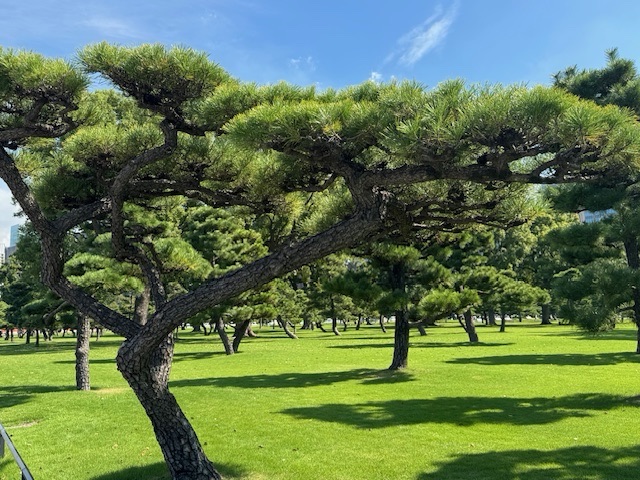
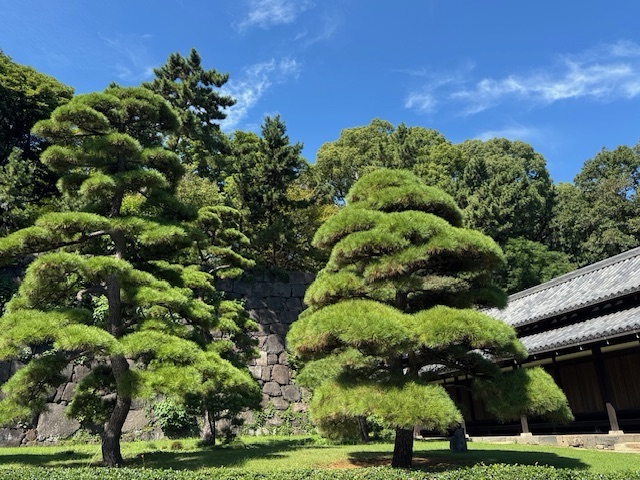
Atop a gentle green slope, on the former site of Edo Castle, sits the Imperial Palace. It remains the primary residence of Japan’s emperor and his family. Surrounded by moats, stone walls, and sprawling gardens, it’s both a fortress and a functioning home for Japan’s modern monarchy.
Emperor Naruhito ascended the Chrysanthemum Throne in 2019 after his father, Emperor Akihito, abdicated. Though Japan’s emperor no longer holds political power, he remains a symbolic figure of unity and tradition, carrying on a lineage said to be the oldest continuing hereditary monarchy in the world.
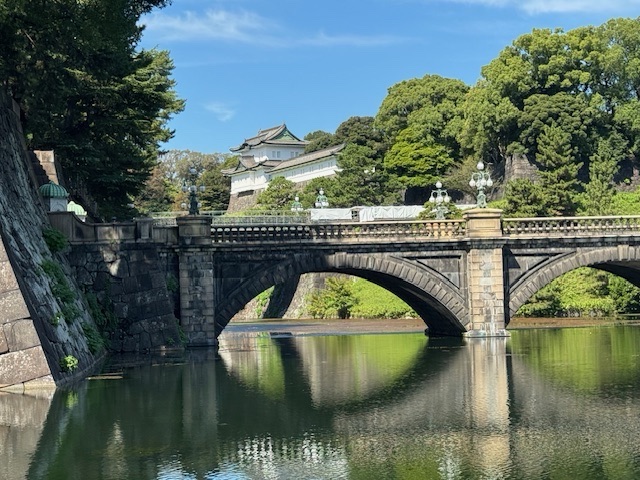
For centuries, Japan’s emperors were seen as divine, tracing their lineage back to the sun goddess Amaterasu. That belief lingered right up through World War II, when Emperor Hirohito was officially revered as a living god. But that changed in 1946 when Hirohito renounced his divinity (under pressure by the Allied occupation forces led by General Douglas MacArthur). The renunciation paved the way for a new Japanese constitution, drafted by U.S. officers. The document officially went into effect in 1947 and redefined the emperor as a “symbol of the State” with no political power.
The inner palace grounds are closed to the public. One can catch a glimpse of the elegant bridges and gates and wander its gardens. In the past, before being surrounded by tall skyscrapers and 14 million people, these canals were fed thru a series of waterways and gates from the sea.
Museums
Don’t know much, if anything, about Japanese artists. Seems a good reason to visit the National Museum of Modern Art (MOMAT). The MOMAT offers a permanent collection of 20th-century Japanese and Western art. Notable artists include works by Yokoyama Taikan and Kishida Ryūsei, as well as contemporary works by artists like Yayoi Kusama and Yoshitomo Nara.
Currently, there is an excellent exhibition called War Record Paintings. Art and propaganda proved to be history’s double edged sword. Japans’ very long military history is examined. Understood is the “need to face the truth if we are to move forward.” This becomes a lesson for us all.
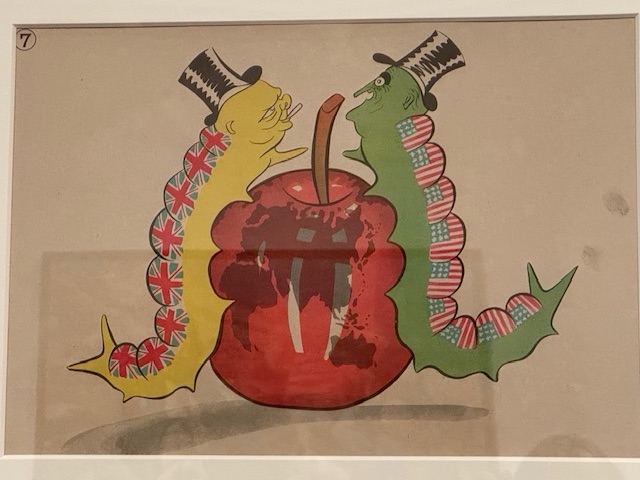
Visit the museum’s top-floor lounge which offers a nice panorama of the Imperial Palace’s grounds and the Tokyo Station complex. It’s a good spot to reflect on the art and enjoy the view of the palace’s moat, walls and gardens.
Yasukuni Shrine
I leave by the Tayasu-mon Torii. Passing under the imposing First Torii, I begin my stroll under ginkgo trees. This memorial park contains numerous shrines, archways, and memorials to the war dead.
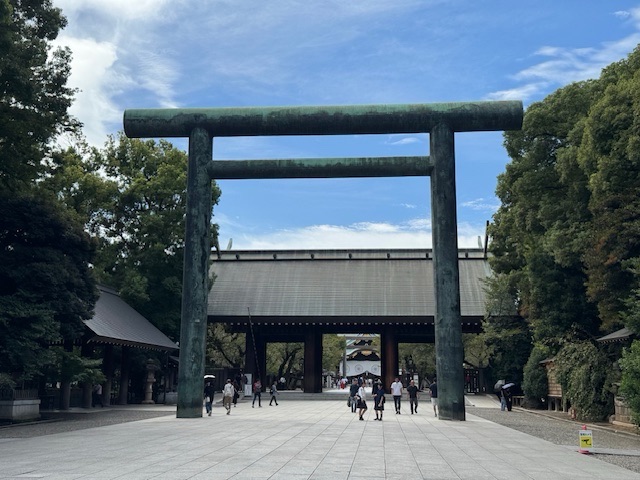
A torii exemplifies a traditional Japanese gate most often found at the entrance to Shinto shrines. Think of it as a marker that says, “You’re about to step from chaos into a place where the spirit and earth meet.” The wood or stone structure, painted in bright vermilion or left natural, consists of two upright pillars topped with a pair of horizontal crossbars.
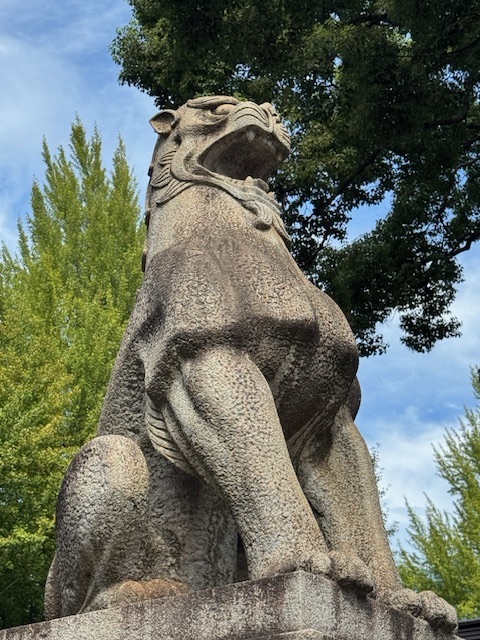
Yasukuni Shrine represents history and symbolism. The approach begins with the First Torii, a massive steel gate. Just to the right sits the Memorial for the Hitachimaru. This monument memorializes the army transport ship Hitachi Maru sunk by Russia’s Vladivostok fleet during the Russo-Japanese War.
A little farther on stands the Stone Torii, sturdy and quiet, flanked by guardian lions. Closeby stands the bronze statue of Ōmura Masujirō—often called the father of the modern Japanese army.
Nearby, the Yūshūkan Museum offers a thought-provoking look at Japan’s military past. Established in 1882, it’s one of the oldest museums of its kind in the world, housing samurai swords, armor, letters, and even larger artifacts like planes and tanks.
The Sanctuary
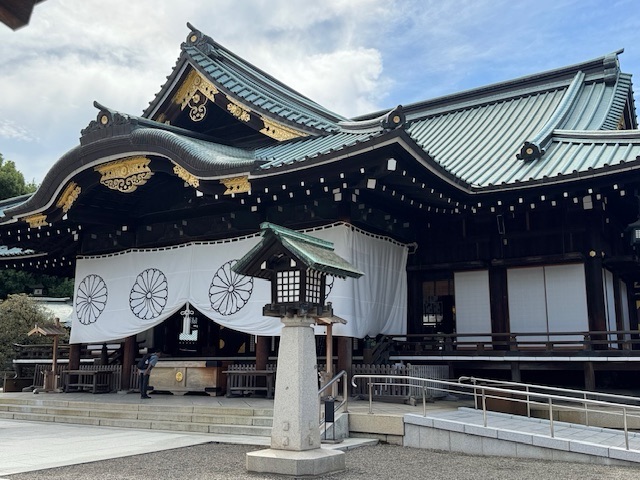
Perhaps the pièce de résistance of Yasukuni Shrine, and perhaps Tokyo, is past the Chumon Torii. Sanctuary’s wooden beams, copper roof, and peaceful courtyard encourages reflection. Established in 1869 by Emperor Meiji, it honors those who died fighting for Japan. Yasukuni roughly translates as “peaceful country.” The occasional clink of bells and rustle of tree leaves accent the silence here. BFF’s memories joined the others in this tiny corner of world history.
The shrine honors the spirits of about 2.5 million men, women, and children who died in service to Japan from the Meiji Restoration through World War II. The shrine sometimes inspires controversy because among those enshrined are soldiers and leaders convicted of war crimes. Still, for many Japanese people, Yasukuni is a solemn place to pay respects to ancestors and remember their sacrifices.
Whether you come for history, architecture, or the solemn atmosphere, the gates, shrines, statues, and museums make Yasukuni special. Japan’s past feels very present. I feel a sense of reverence and order. The grounds reflect the sacrifices, traditions, and deep history of the Japanese people, a quiet reminder of the past.
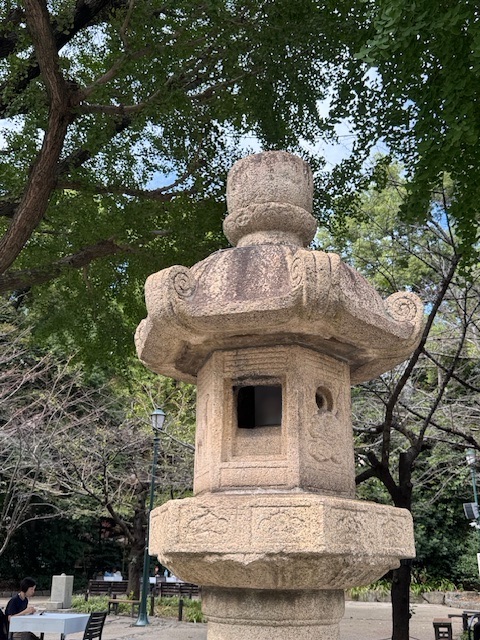
But all too soon, it’s time to return to reality and re-enter the noise and bustle of Tokyo. Rather then seek the calm just a little longer, I choose to allow the city to swallow me up.
Shinjuku
I become one of the 3.6 million passengers per day who pass through Shinjuku Station. If I thought Hamamatsuchō was a challenge, then Shinjuku is insanity. What I do for a peak at the Big Guy.
I ride the circular Yamanote line clockwise to what is pretty much cat square. Perhaps by instinct, I exit Shinjuku via the east exit Plaza. Directly above me is perhaps one of the most famous, or infamous, billboards known today. A large curved LED screen displays a large 3-D calico cat appearing to pop out and do everyday cat tasks like waking up, going to sleep, and the inevitable knocking things over. Ts one busy crossing where one doesn’t mind waiting for the light.
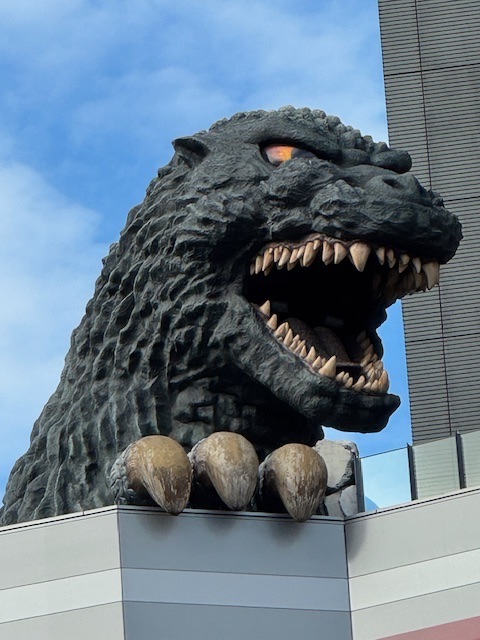
Directly ahead along the busy, busy Godzilla Road, Godzilla himself awaits. The Godzilla head is a large replica of the famous movie monster’s head that sits atop Toho Cinemas, the studio that created Godzilla. The Big Guy overlooks the crowds and even roars and lights up at certain times of day. It has become a popular landmark and photo spot, symbolizing both Shinjuku’s vibrant entertainment district and Japan’s enduring love for the Godzilla franchise.
Change of Pace
Alas, it’s time to bid my solo wandering farewell and shuffle off to a new hotel to meet my tour group. While I’m genuinely excited for the adventures ahead, a small part of me mourns the loss of glorious independence—the freedom to linger in gardens and chase Godzilla statues.
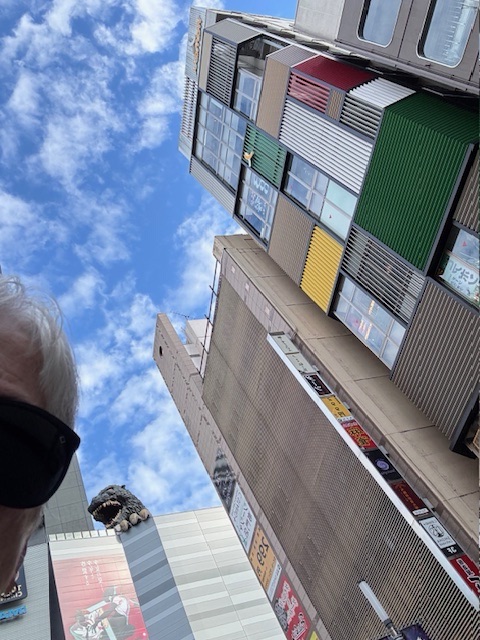
I can’t help but wonder: will there be any Godzilla fans in the group to appreciate my carefully curated monster sightseeing? Or, will I have to defend the king of the kaiju all by myself? Either way, I brace for shared itineraries, synchronized breakfasts, and the curious challenge of blending my personal Tokyo tastes with my fellow travelers.
0 Comments